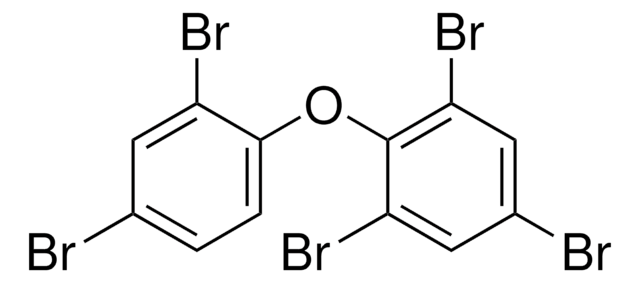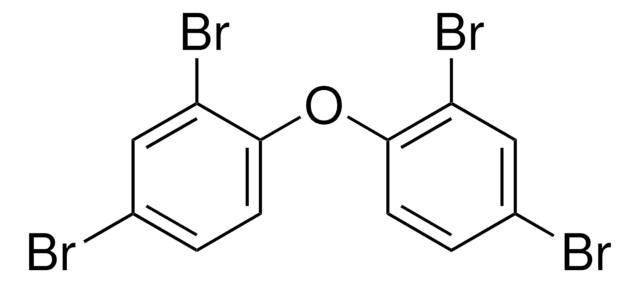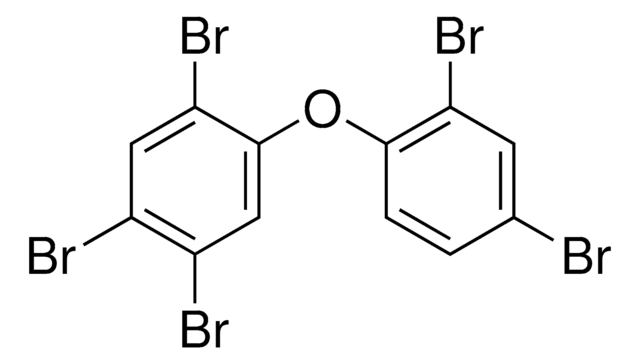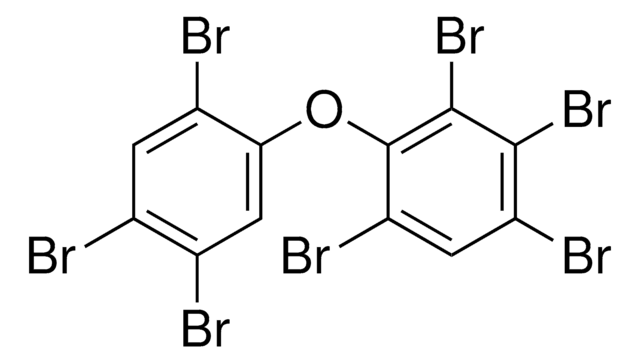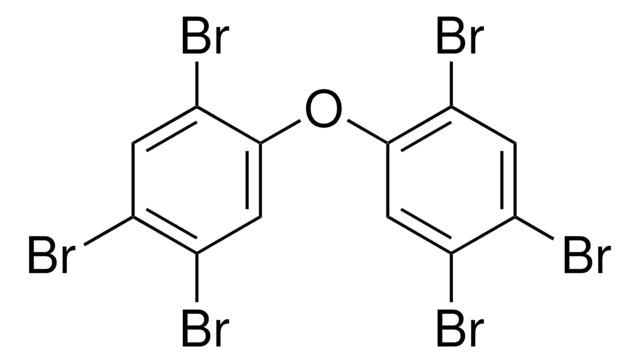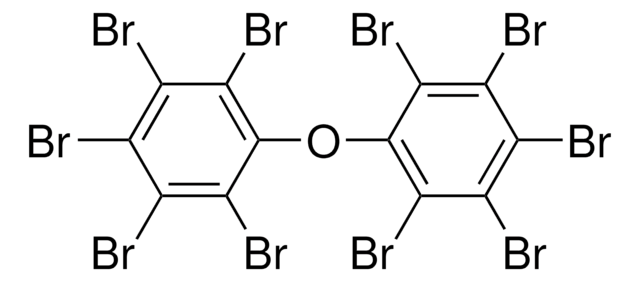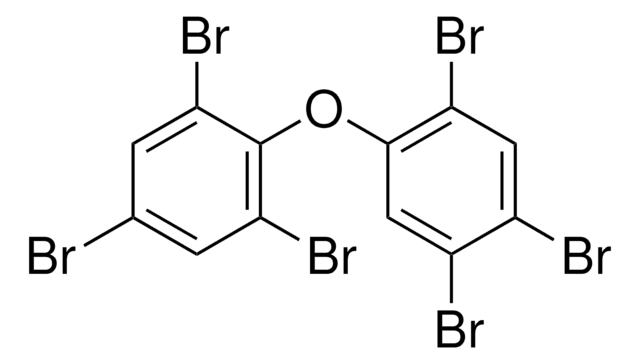33670
BDE Nr. 47 -Lösung
50 μg/mL in isooctane, analytical standard
Synonym(e):
2,2′,4,4′-Tetrabromdiphenylether -Lösung, 2,2′,4,4′-TetraBDE, PBDE 47
About This Item
Empfohlene Produkte
Qualität
analytical standard
Haltbarkeit
limited shelf life, expiry date on the label
Konzentration
50 μg/mL in isooctane
Methode(n)
HPLC: suitable
gas chromatography (GC): suitable
Anwendung(en)
environmental
Format
single component solution
Lagertemp.
2-8°C
SMILES String
Brc1ccc(Oc2ccc(Br)cc2Br)c(Br)c1
InChI
1S/C12H6Br4O/c13-7-1-3-11(9(15)5-7)17-12-4-2-8(14)6-10(12)16/h1-6H
InChIKey
XYBSIYMGXVUVGY-UHFFFAOYSA-N
Anwendung
Sonstige Hinweise
The standard should be transferred to a clean and appropriate vial or flask using clean pipettes or micro pipettes. The vial should be immediately capped to avoid any loss or evaporation of the solvent.
After opening the ampoule, the standard should not be stored or kept in the ampoule. To preserve the integrity of the product, the standard should be transferred to an appropriate vial that must be capped and stored according to the recommendation on the Certificate of Analysis.
Signalwort
Danger
H-Sätze
Gefahreneinstufungen
Aquatic Acute 1 - Aquatic Chronic 1 - Asp. Tox. 1 - Flam. Liq. 2 - Skin Irrit. 2 - STOT SE 3
Zielorgane
Central nervous system
Lagerklassenschlüssel
3 - Flammable liquids
WGK
WGK 2
Flammpunkt (°F)
10.4 °F
Flammpunkt (°C)
-12 °C
Persönliche Schutzausrüstung
Eyeshields, Faceshields, Gloves, type ABEK (EN14387) respirator filter
Hier finden Sie alle aktuellen Versionen:
Besitzen Sie dieses Produkt bereits?
In der Dokumentenbibliothek finden Sie die Dokumentation zu den Produkten, die Sie kürzlich erworben haben.
Kunden haben sich ebenfalls angesehen
Unser Team von Wissenschaftlern verfügt über Erfahrung in allen Forschungsbereichen einschließlich Life Science, Materialwissenschaften, chemischer Synthese, Chromatographie, Analytik und vielen mehr..
Setzen Sie sich mit dem technischen Dienst in Verbindung.